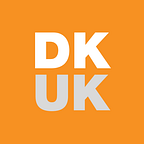Introducing the Local Needs Databank
by Georgia Iacovou on behalf of Turn2us. This has been cross-posted from the Data Collective, a community of people in social change organisations who use data.
A valuable resource for charities and funders to better understand the needs of those most affected by Covid-19
The Local Needs Databank is an open set of needs and Covid-19 data, specifically about those in financial hardship in the UK. It represents the combined efforts of Turn2us, Buttle, British Gas Energy Trust, and NPC, who worked together last year to accelerate this project, in light of the more complex and ever-changing needs that Covid-19 presented.
This databank was created because there’s a large amount of data out there about the economic vulnerability of various communities, as well as the health and Covid-19 statistics of those communities. Until now, this openly available data was scattered across many different sources. The Local Needs Databank brings all this valuable data together into a simple dashboard, so that organisations and individuals can look at it all at once, make comparisons, and more accurately identify potential demand for their services.
The kind of data in the bank
The dashboard has tabs that present you with different kinds of data from government departments such as Public Health England, the ONS, and the Department of Education, and charities. To summarise the data provided by charities:
- Turn2us: this tab compares how many calculations were made via their Benefits Calculator in 2019, with how many made in 2020, sorted by local authority.
- Buttle UK: here you can see how many grant applications were made in 2019 and 2020, by children and young people living in poverty who have been impacted by crisis.
- British Gas Energy Trust: this tab shows data on grants awarded between April 2020 and January 2021, alongside fuel poverty by local authority.
Other data relating to demographics and Covid-19 is taken from a wide range of sources, and includes:
- Covid-19 cases and infection rate by region, updated weekly
- The top 20 most affected local authorities
- Vaccination data
- Covid-19 infections and deaths by these demographics: Elderly population, BAME population, and children and young people.
Why this data is so useful, and how you can make use of it yourself
Essentially, just by improving access to all this data, it enables those in the sector to make better decisions. This isn’t just general data on poverty alongside some Covid-19 statistics — this is data provided by charities who are working on the ground to meet the needs of those in crisis. The charity data gives context to poverty statistics, and helps paint a much more detailed picture of the state of poverty in the UK.
This is the first time shared knowledge in this sector has been consolidated like this. The databank shows us data on the most vulnerable groups, and the most deprived parts of the UK, and compares that with the demand that charities are seeing. Having a greater understanding of how demand changes around the country has now enabled other organisations to make meaningful impact at a local level.
Here’s a quick example: let’s say you work for a charity that is seeking to support children and young people in specific local authorities and regions of the country. You’d likely want to start by looking into areas with the most urgent need for this support, so that you can proactively design programming for them.
The databank makes it extremely straightforward to do this. You can find the areas that have the highest rate of child poverty, and look at the charity density. Then you can compare that with demand data provided by charities and identify potentially underserved areas. If you also take the insights generated by your charity into account, you can get an accurate understanding of which areas to prioritise with your services.
This example hopefully makes two key things clear: firstly, targeting your support to the ‘right’ places is now much more straightforward than it was before. Secondly, the more charities join the databank, the more useful it will be — more detail on local demand will only make it easier to have a local impact.
How to add your data to the Local Needs Databank
If your organisation generates data relating to UK poverty, you already meet half the criteria to join. The other half is to want to be part of an initiative which empowers organisations across the sector to make data-driven decisions which lead to greater impact on a local level.
However, contributing your data can seem like a daunting task. Perhaps you feel your organisation is not data mature enough, or you just don’t have the capacity right now. Whatever your concerns are, feel free to email Rosario Piazza from NPC — he can help you get the ball rolling.
If you want to read more about the Local Needs Databank, Amelia Smith from Buttle has written about it in more detail here.
This collaboration also went beyond a mere one-off publication of data. NPC has written up an analysis of the data provided from Buttle UK and Turn2us, which also provides helpful insight, and is illustrative of how collaborative this process has been.
If you’re interested in finding out more about the Data Collective, a network for people in social change organisations who use data, explore the Data Colllective website or sign up here.
